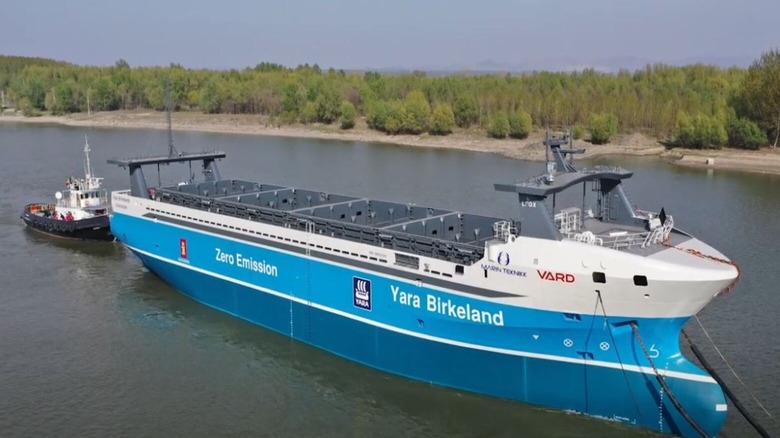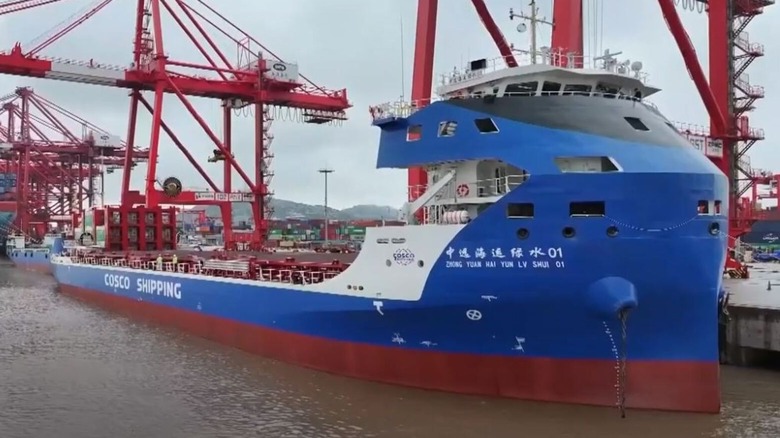Electric Cargo Ships: How Do They Work?
There are over 100,000 cargo ships of different types and sizes sailing the world's oceans daily. Each one is an important link that bridges nations through trade and commerce by carrying supplies, raw materials, and finished goods from one port to the next. Travelling thousands of nautical miles across some of the busiest and sometimes dangerous waterways, a cargo ship can take more than two weeks to cross the Pacific Ocean alone. The majority of cargo ships plying the shipping lanes use diesel power plants, but a new type of vessel called the electric cargo ship has been developed and uses batteries to run its engines.
Similar to electric vehicles, there are two different types of electric-powered ships now being used. The first is the hybrid type, which uses two power sources, a conventional combustion engine and electric motors that use electricity, and can be used individually or in parallel with each other to run both the propulsion and auxiliary systems. The other kind are the fully electric-powered ships that utilize batteries as their only energy source. These batteries then power the electric motors, navigation, and other equipment.
For the fully electric cargo ships, these operate by having a large cache of batteries, normally of the lithium-ion type, which are designed to provide enough power for a journey, plus provisions for emergency power. The two biggest electric ships, the Yara Birkeland from Norway and the Greenwater 01 from China, utilize different battery storage and charging configurations. The Yara Birkeland uses below-deck rooms to store its batteries, and gets its charge at terminals while it unloads its cargo at port, while the Greenwater 01 has its batteries in stowed containers, which are exchanged for fresh batteries, when it docks at various ports.
A cleaner more sustainable cargo vessel
The engineering of electric cargo ships has several advantages compared to conventional ships. In terms of running costs, electric cargo ships are more efficient, specifically for shorter routes, while its simpler design and fewer parts require less maintenance and straightforward repair. Next, the electric motors used for propulsion and steering allow for easier and better control of the ship and generate less noise during operation. Lastly, by using batteries, electric cargo ships are cleaner owing to their reduced or zero emissions, and minimize the risk of water pollution from oil and fuel leaks or spills.
Despite these upsides, current electric cargo ships have limitations, with cargo capacity being foremost. As the biggest ship of its kind, the Greenwater 01 can only accommodate 700 twenty-foot equivalent units (TEU), which is substantially less than the smallest container capacity of conventional cargo ships. Next, the charge limitations of batteries restrict its range, with the Greenwater 01 capable of just 621 miles. In addition, the facilities and equipment required to charge its batteries are insufficient, and several are incompatible, which impacts its usability. Finally, electric container ships are slower, with an average speed of just 12 mph, which is less than half the top speed of container ships.
An unfortunate aftermath of cargo ship operations is their environmental impact. Pollution caused by the use of fossil fuel for its engines, wastewater discharge, and even oil spills has caused serious harm to the oceans. The advent of electric cargo ships is a positive step towards lasting change in the shipping industry. While there are current economic and technological challenges to its large-scale adoption, the maturation of the technology used in electric cargo ships will enable a more sustainable and efficient option for the shipping industry.

